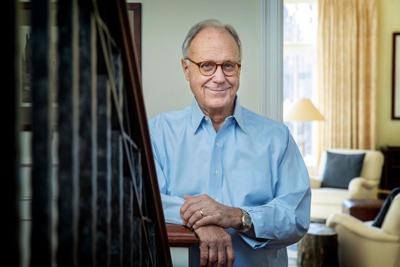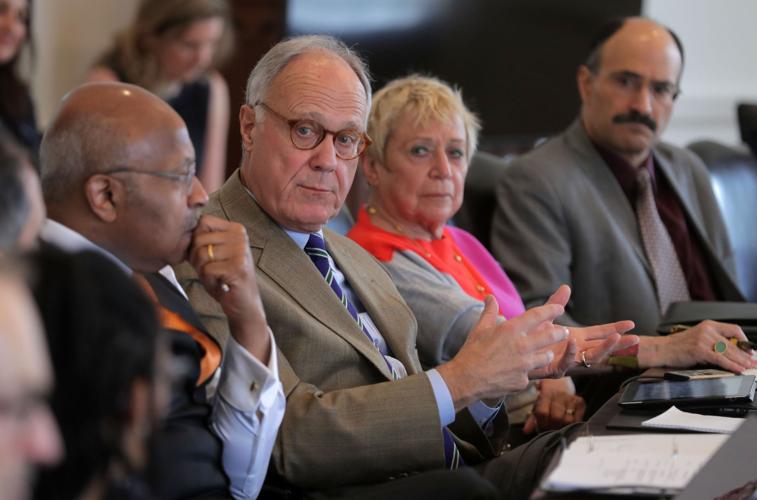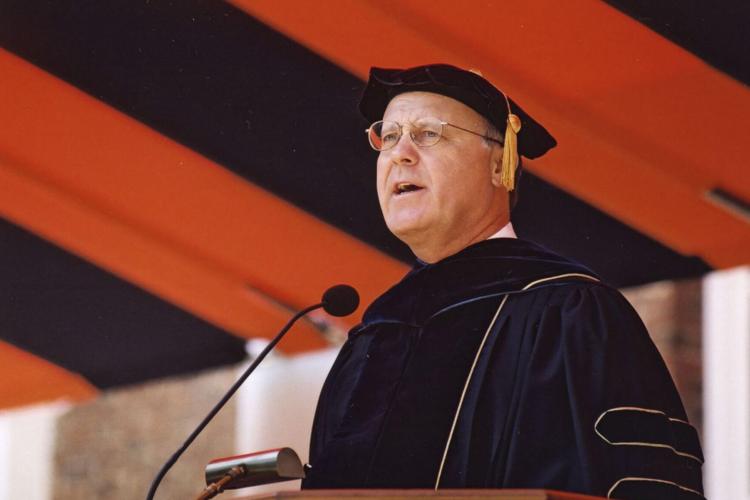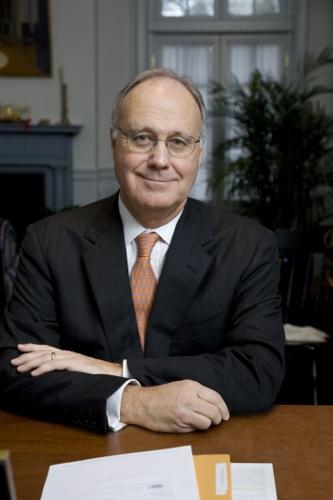Former University of Virginia President John Casteen III, at one time described the “father of the modern university,” has died.
Casteen, who oversaw extensive growth, financial stability measures and diversity enhancements during his two decades as UVa’s seventh president, died Tuesday at his home in Keswick after a short battle with pancreatic cancer. He was 81.
While at the helm of the commonwealth’s flagship public university between 1990 and 2010, Casteen helped shift UVa to private fundraising to help insulate it from extensive state budget cuts and stabilize its financial future.
Building and growth also were a focus for Casteen. He was in the top post when John Paul Jones Arena, Hereford College, the Albert and Shirley Small Special Collections Library, the South Lawn Project and other major works were undertaken on and around UVa Grounds.
People are also reading…
The Betsy and John Casteen Arts Grounds were named in honor of Casteen and his wife in 2010 after a variety of new facilities were built and others improved there. They include building the Ruth Caplin Theatre, renovating the Bayly Building for the Fralin Museum of Art at UVa, constructing the Culbreth Road parking garage, restoring Fayerweather Hall for the art history program, expanding Campbell Hall for the School of Architecture and creating Ruffin Hall for studio art.
UVa’s financial autonomy was crucial for Casteen at a time when state budget cuts threatened university programs. He led two campaigns to enrich UVa’s endowment, which grew from $488 million to $5.1 billion during his presidency while the state’s contributions dropped from 26% to only 6%.
While Thomas Jefferson will always be remembered as the father of the university itself, Casteen is remembered as the father of the modern UVa.
“John Casteen has been an effective fundraiser because he has always been passionate about the University and its needs,” former UVa Rector Gordon Rainey Jr. once said of Casteen. “His success at the University results from a deep understanding of Mr. Jefferson’s founding vision and his ability to transform the University for modern times consistent with that vision. In many ways he will be remembered as the father of the modern University.”
Praised by many others for moving UVa into a modern era, Casteen championed scientific and academic research and expanding and creating programs of study. Students found more residential colleges, language houses and opportunities to study abroad. The first-generation college student who rose to call the Carr’s Hill presidential residence home also created a financial aid program to help make sure that students who wanted to attend UVa, but did not come from wealth, could make their own dreams come true.
Born in Portsmouth on Dec. 11, 1943, Casteen received his bachelor’s and master’s degrees and doctorate at UVa, where he was a scholar of medieval literature. After serving briefly as assistant professor of English at the University of California, Berkeley, he returned to UVa in 1975 as dean of admissions.
Casteen served as Virginia’s secretary of education from 1982 to 1985, focusing on desegregating and diversifying the state’s colleges and helping students from all backgrounds find educational opportunities. He continued championing these causes later at his alma mater.
After leading the University of Connecticut as president from 1985 to 1990, Casteen came home to UVa, serving as a professor of English and succeeding Robert O’Neil as UVa’s president in 1990.
Only Edwin Alderman, UVa’s first president, has served a longer term.
“John Casteen is simply inseparable from the story of UVa,” sitting UVa President Jim Ryan said in a statement. “As president, he transformed UVa into a world-class university. As a teacher, mentor, colleague and friend, he was beloved. This is a sad day for all those whose lives he touched, including mine, and I extend my deepest condolences to Betsy, his children and his entire family. John will be remembered as an ambitious, wise and devoted leader whose legacy will endure at the University of Virginia.”
“It is impossible to overstate the contributions John Casteen made to this university and how profound a loss his passing is for his family and for the community he loved and served so well,” UVa Rector Robert Hardie said in his own statement. “As we remember him, we will rightly focus on his many accomplishments as president, but that legacy is matched, if not exceeded, by the incredible impact he made on the lives of so many people here at UVa and around the world. He will be dearly missed.”
Casteen was succeeded as UVa’s president by Teresa Sullivan, who was pushed out by the university’s governing Board of Visitors in 2012 and reinstated 16 days later after the Faculty Senate, deans and others rushed to her defense.
A prolific writer, he released “16 Stories,” a collection of short fiction works, in 1981 and hundreds of articles over the years on a variety of academic topics.
Casteen and his wife, Betsy Foote Casteen, were married in 2003 in the first wedding of a UVa president to take place at Carr’s Hill.
Casteen’s survivors include his wife; his daughter, Elizabeth Ingeborg Casteen; his sons, John Thomas Casteen IV and Lars Löfgren Casteen; his brothers, Dennis Casteen and Tim Casteen; his stepdaughters, Alexandra Taylor Foote and Elizabeth Laura Robinson; and his 12 grandchildren.
A service for family members and close friends is planned at Grace Episcopal Church in Keswick. A public memorial service to honor Casteen will be scheduled for later in the spring.
According to Casteen’s obituary, his family asks that, in lieu of flowers, donations be made to AccessUVa. Casteen founded the need-based scholarship and financial aid program in 2003 to help make sure promising undergraduate students could attend the university he loved.




















